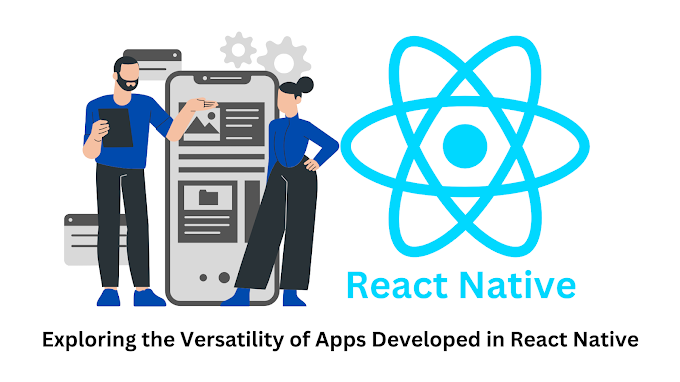Introduction
In the ever-evolving landscape of database technologies, MongoDB has emerged as a leading player, redefining how we store, manage, and retrieve data. As a prominent NoSQL database, MongoDB offers flexibility, scalability, and versatility that address the challenges posed by modern applications and the ever-expanding volumes of data they handle. In this comprehensive article, we will embark on a journey to explore MongoDB, its history, core features, applications, and the pivotal role it plays in the world of data management.
Chapter 1: The Evolution of Databases
1.1. The Relational Database Model
Traditional relational databases, such as MySQL, Oracle, and PostgreSQL, have long been the go-to choice for data storage. They offer structured data models with tables and schemas, providing the reliability and data integrity needed for many applications.
1.2. The NoSQL Revolution
The rise of web and mobile applications brought forth new challenges, including the need to handle unstructured and semi-structured data, as well as the demand for high scalability and low-latency access. NoSQL databases, including MongoDB, were developed as a response to these challenges, offering flexibility and performance that relational databases struggled to provide.
Chapter 2: The Birth of MongoDB
2.1. The Founding Principles
MongoDB was created in 2007 by Dwight Merriman, Eliot Horowitz, and Kevin Ryan, with the aim of building a database that could meet the demands of modern applications. Their vision was to create a database that could handle the growing volumes of data, adapt to evolving schemas, and provide high availability and scalability.
2.2. The Document-Oriented Approach
One of MongoDB's defining features is its document-oriented data model. Instead of tables, it uses collections of documents, which are stored in BSON (Binary JSON) format. This approach allows for the representation of complex, hierarchical data structures in a natural and intuitive way.
Chapter 3: Core Features of MongoDB
MongoDB's popularity stems from a set of core features and capabilities that make it stand out among NoSQL databases. Let's delve into these key aspects:
3.1. Flexible Schema
MongoDB offers a dynamic and schema-less approach to data modeling. This means that documents within a collection can have varying structures, allowing developers to adapt to changing requirements without the need for complex migrations.
3.2. High Scalability
MongoDB's architecture is designed for horizontal scalability. It can handle large volumes of data and high traffic loads by distributing data across multiple servers or clusters.
3.3. Replication and High Availability
MongoDB provides built-in support for data replication and automatic failover. This ensures data redundancy and minimizes downtime in the event of hardware failures.
3.4. Rich Query Language
MongoDB offers a powerful query language that allows developers to filter, project, and aggregate data in a flexible manner. It supports geospatial queries, text search, and more.
3.5. Indexing
MongoDB supports various types of indexing, including single-field, compound, and geospatial indexes. Indexes improve query performance by allowing for efficient data retrieval.
3.6. Full-Text Search
MongoDB includes a full-text search engine, making it suitable for applications that require advanced text search capabilities.
3.7. Geospatial Capabilities
MongoDB has native support for geospatial data and queries, making it an excellent choice for location-based applications.
Chapter 4: MongoDB in Action
MongoDB's versatility and performance make it suitable for a wide range of applications and use cases. Let's explore some key areas where MongoDB excels:
4.1. Content Management Systems (CMS)
MongoDB is commonly used in content management systems to store and retrieve structured and unstructured content efficiently.
4.2. E-commerce Platforms
E-commerce websites benefit from MongoDB's ability to handle complex product catalogs, user profiles, and transaction data.
4.3. Real-Time Analytics
MongoDB is well-suited for real-time analytics applications, where data is ingested, processed, and analyzed in near real-time to gain insights and make informed decisions.
4.4. Internet of Things (IoT)
MongoDB's scalability and flexibility make it an ideal choice for storing and analyzing data generated by IoT devices, sensors, and connected appliances.
4.5. Mobile Applications
MongoDB is used as the backend database for many mobile applications, providing seamless synchronization of data between mobile devices and servers.
4.6. Logging and Event Tracking
MongoDB's fast write capabilities make it suitable for storing logs and event data, which are critical for troubleshooting, auditing, and monitoring applications.
Chapter 5: The MongoDB Ecosystem
MongoDB's ecosystem extends beyond its database core, encompassing a variety of tools and services that enhance its functionality:
5.1. MongoDB Atlas
MongoDB Atlas is a fully managed database service in the cloud, offering automated backups, scaling, and high availability without the need for manual configuration.
5.2. MongoDB Compass
MongoDB Compass is a graphical user interface (GUI) for MongoDB that simplifies database administration and querying.
5.3. MongoDB Stitch
MongoDB Stitch is a serverless platform that simplifies backend development by providing authentication, data synchronization, and serverless functions.
5.4. MongoDB Charts
MongoDB Charts is a visualization tool that allows users to create and share interactive charts and dashboards based on MongoDB data.
Chapter 6: The Future of MongoDB
MongoDB continues to evolve to meet the demands of modern data management. Several trends and developments are shaping the future of MongoDB:
6.1. Multi-Cloud Deployments
As organizations seek flexibility and redundancy, multi-cloud deployments are becoming more common. MongoDB is poised to support this trend with features that facilitate data distribution across different cloud providers.
6.2. Machine Learning and AI Integration
The integration of machine learning and artificial intelligence with MongoDB is expected to grow, enabling predictive analytics and automated decision-making based on data stored in MongoDB.
6.3. Enhanced Security
Security remains a top priority for databases. MongoDB is likely to continue enhancing its security features to protect data against evolving threats.
6.4. Edge Computing
The rise of edge computing brings new opportunities for MongoDB to support data storage and processing at the network edge, closer to IoT devices and end-users.
Chapter 7: Conclusion
MongoDB's journey from its inception to its current status as a leading NoSQL database is a testament to its adaptability, performance, and developer-friendly approach to data management. Its flexible schema, scalability, and robust feature set have made it a preferred choice for organizations seeking to harness the power of modern data.
As MongoDB continues to evolve and adapt to emerging technologies and trends, it remains a driving force in the world of data management. Embracing MongoDB means joining a global community of developers and organizations dedicated to unlocking the potential of data to drive innovation and success in the digital age. It is a story of innovation, resilience, and the transformative power of modern database technology.












0 Comments